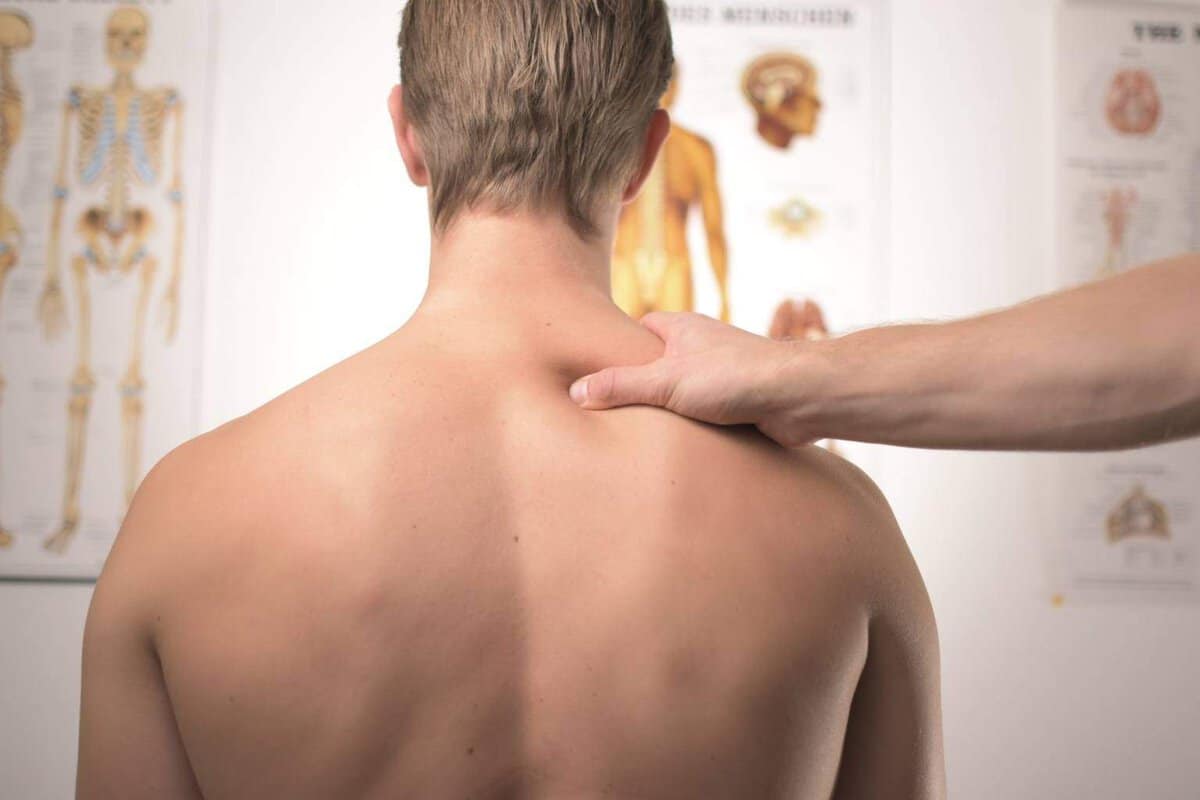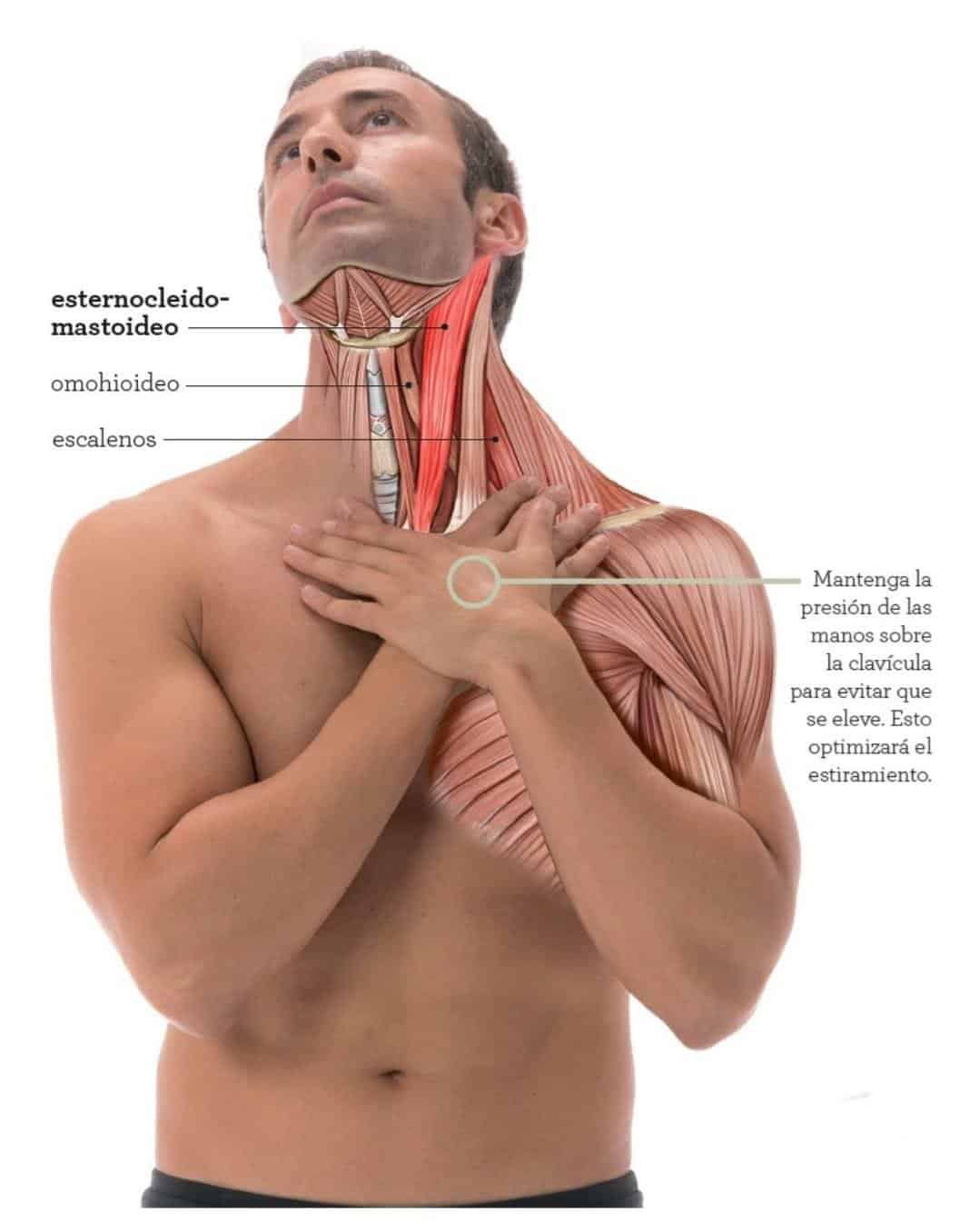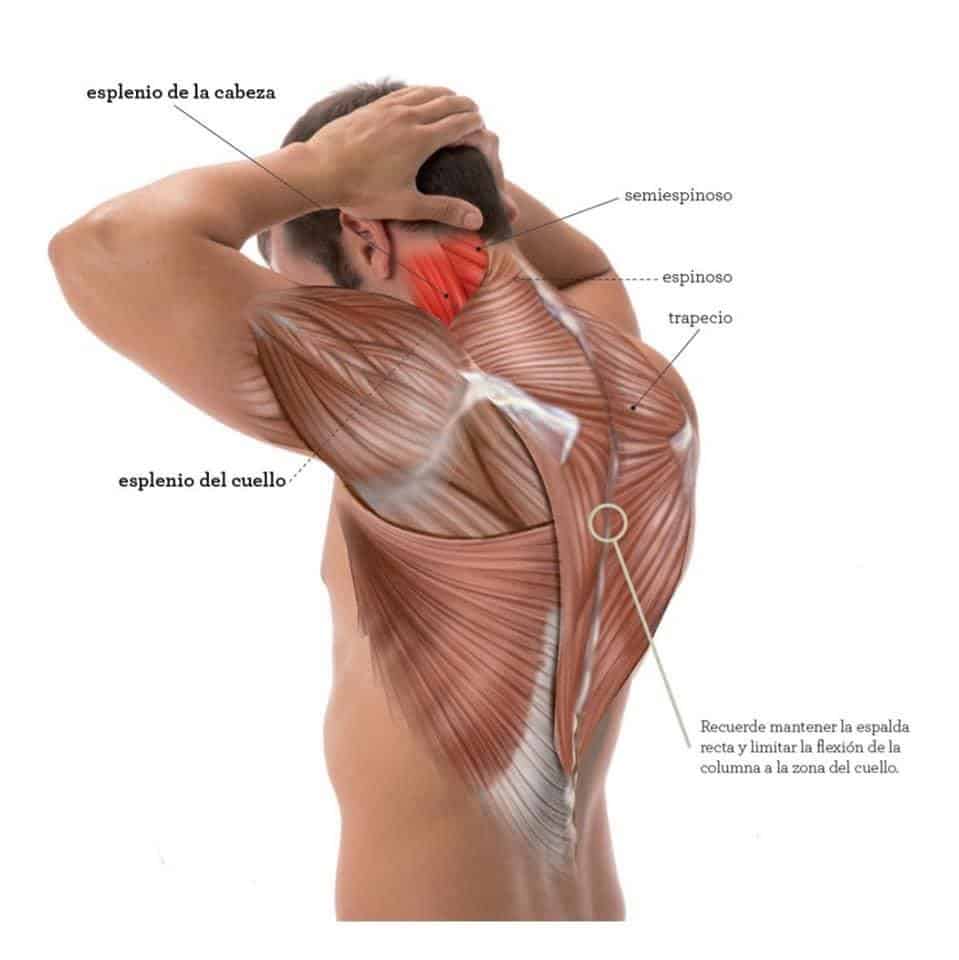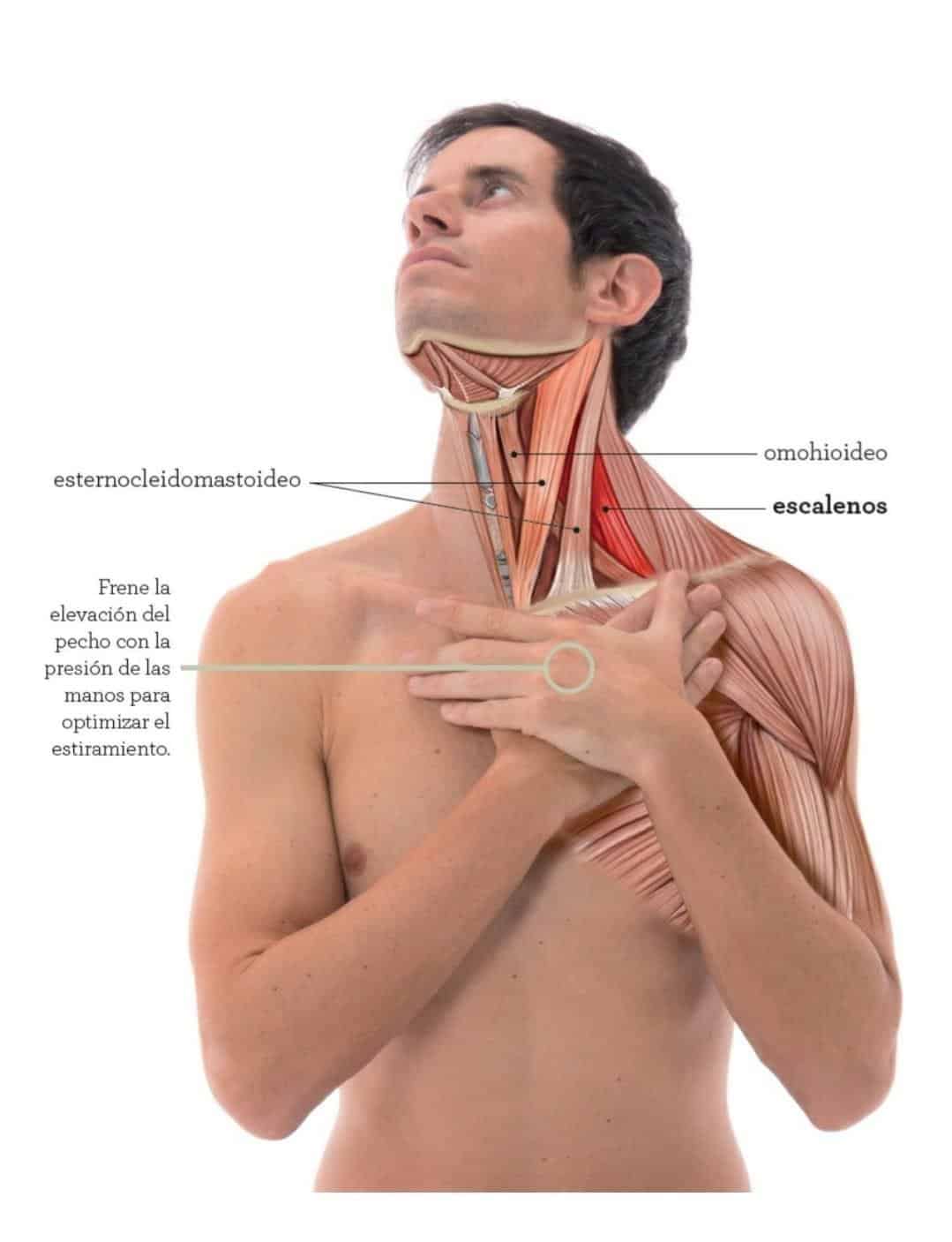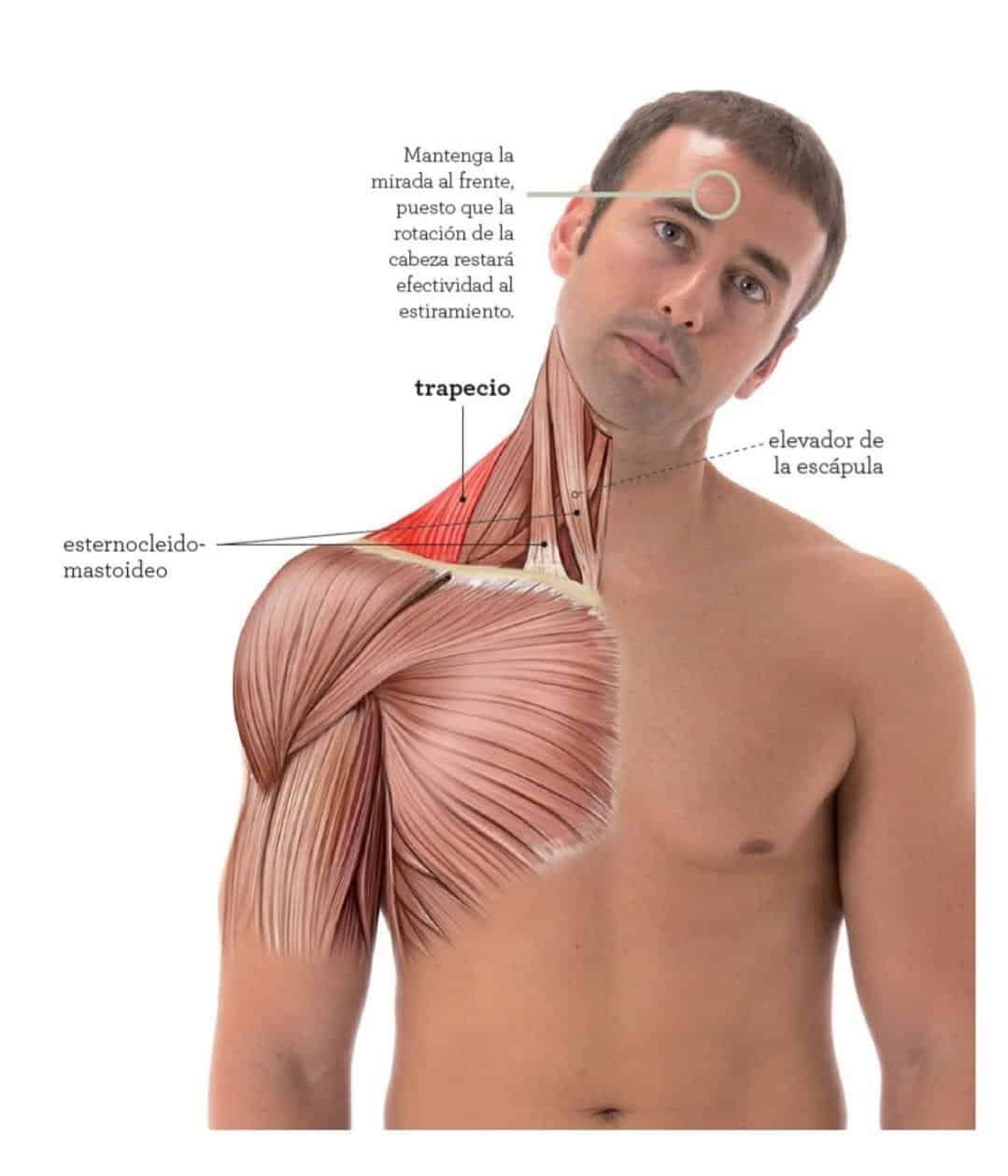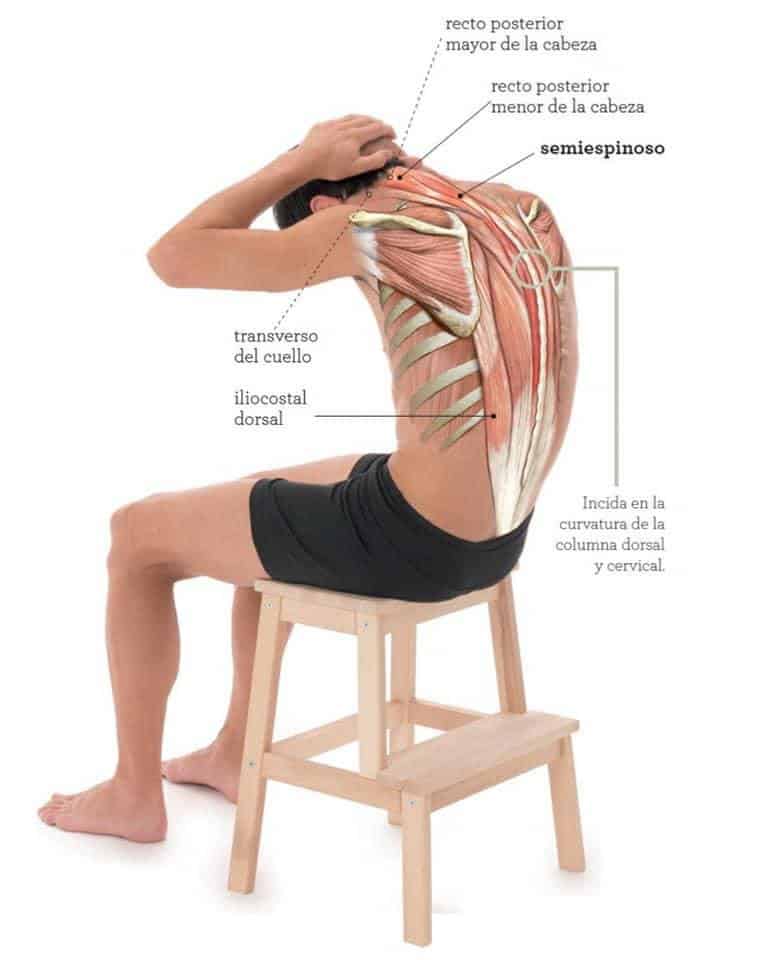In this article, we show you fundamental aspects to learn how to strengthen your neck.
We live in a society characterized by a sedentary lifestyle. Being seated all day in front of a screen or standing with the neck bent looking at the mobile phone causes several health problems; from simple contractures to severe cervical issues. Additionally, recent studies have shown that people who have neck pain often also have other mental and/or physical problems.
The American chiropractor Dean L. Fishman coined the term Text Neck in 2008 for the repetitive and sustained action of looking at the mobile phone in an incorrect position.
Who is more prone to neck pain?
It has been shown that women are more prone than men to suffer from neck pain at some point in their lives.
A study conducted by the University of Manchester “Risk factors for neck pain: a longitudinal study in the general population” revealed that 17.9% of the population aged between 18 and 75 years suffered neck pain during the 12 months the study lasted.
From a sports perspective, the importance of strengthening the neck and its musculature is evident, especially in sports where physical contact occurs.
In rugby, for example, players in the front lines subject their necks to extraordinary forces, so they must take care of their postural hygiene by paying special attention to strengthening the stabilizing muscles of the neck.
It is estimated that neck injuries in rugby account for between 3.5 and 9 percent of all reported injuries, with 42 percent caused by hyper-flexion of the neck, 34 percent by lateral flexion, 22 percent by rotation, and the remaining 54 percent by compression of the vertebrae.

Let’s briefly learn about the anatomy of the neck
Before talking about how to strengthen the neck, let’s briefly learn about the anatomy of this area.
Bones that make up the neck
The neck is composed of the cervical vertebrae, the hyoid bone, and the manubrium of the sternum, which are part of the axial skeleton, and the clavicles, which are part of the appendicular skeleton.
The cervical vertebrae are seven: atlas (C1), axis (C2), typical cervical vertebrae (C3-C6), and the so-called prominent vertebra (C7).
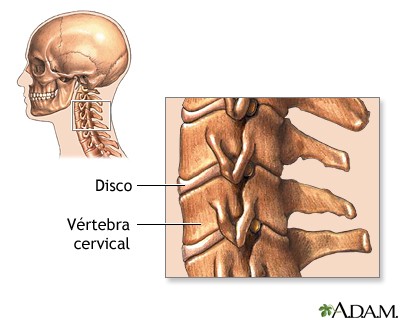
Neck muscles
The neck is composed of many muscles, which we will divide into 3 categories: cutaneous and superficial, prevertebral, and muscles of the anterior cervical region (suprahyoid and infrahyoid).
We highlight the sternocleidomastoid among the cutaneous and superficial muscles, as it allows the head to rotate, contributes to neck flexion, and when acting unilaterally, produces neck flexion towards the side where the contraction occurs.
It is essential to talk about the prevertebral muscles, which are divided between those on the anterior side of the neck; longus colli, longus capitis, rectus capitis anterior, and anterior scalene, all of which have a flexor function on the neck.
Prevertebrals that are on the lateral side of the neck; rectus capitis lateralis (flexes and stabilizes the neck), splenius capitis (has flexor, rotator, and extensor function), middle scalene (lateral flexion and elevates the 1st rib during forced inspiration), and posterior scalene (lateral flexion and elevates the 2nd rib during forced inspiration).
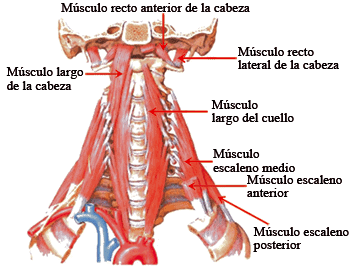
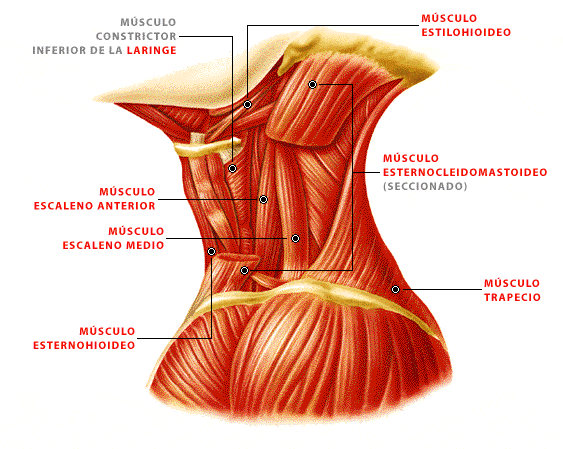
Training to promote neck stability
Keeping the musculature active and strengthened to strengthen the neck is essential for enjoying a life free of pain and other related problems such as dizziness, loss of balance, or headaches. The exercises proposed below are the same for both the sedentary and active population, with the difference being the intensity with which they are performed.
In recent decades, it was thought that the exercise par excellence for gaining neck stability consisted of working it by performing unilateral flexions and extensions, opposing resistance to a load hanging from the head with the help of a harness, which is essentially concentric work; this method of work will not make us gain the postural stability we seek.
What is sought is to achieve keeping the head upright in a strong and secure manner despite loads exerting force from different angles trying to move the head.
It has been demonstrated that isometric work produces greater benefits than concentric work in the stabilizing musculature of the neck.
Isometric work is ideal for strengthening the neck because it allows us to work safely while maintaining the neutrality of the cervical spine and is the best for gaining stability.
The exercises proposed below are designed to achieve the goal of strengthening the neck, strong and stable without sacrificing other parts of our body for it.
To carry them out, we will use elastic bands, which we will place around the head, thus maintaining a healthy and controlled posture.
Elastic bands have become an essential material for strengthening the neck, as by increasing or reducing their length we can achieve different levels of resistance, and consequently, intensity.
When performing the exercises, it is very important to make the gesture of pushing the palate with the tongue, as this will recruit the deeper stabilizing muscles.
Exercises to strengthen the neck
Solid neck hold medley: This exercise is ideal for working static stability, as the individual must maintain that position for periods of 10 seconds.
This exercise also allows us to work dynamic stability, as we can vary the angle of the load and also perform lunges both laterally and backward. It is important to return to the initial position after performing any type of movement.
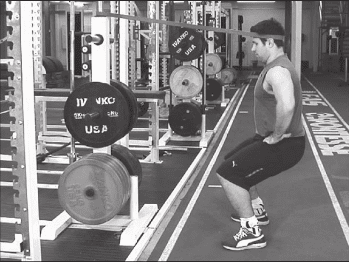
Partner dynamic neck hold: with this exercise, we will gain both static and dynamic cervical stability. It is important to keep the cervical spine neutral during the exercise:
- Static variant: our partner pulls the band until reaching a fixed point of tension and maintains this tension for 10-15 seconds.
- Dynamic variant: our partner pulls gently several times for periods of 10-15 seconds.
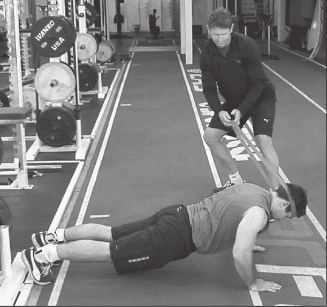
If we do not have the necessary material to perform the exercises, we can use our own hands to create resistance:
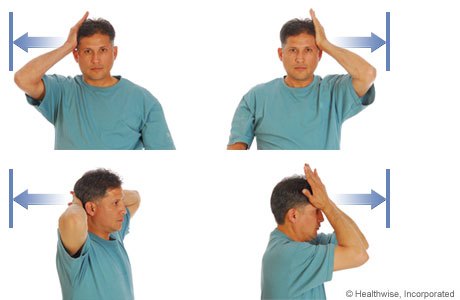
Strengthen your neck
Stretches are an important part of avoiding or reducing neck pain. A study conducted on Finnish office workers suffering from neck pain showed that manual therapy reduces neck pain by 52%, and stretches reduce neck pain by 39%.
This demonstrates that manual therapy is better at reducing neck pain than stretches, but the latter is more accessible to the population, and it is advised to carry it out even when receiving manual therapy.
The neck stretches proposed below should be performed with relaxed shoulders and maintaining smooth breathing. Each stretch should last around 20-30 seconds for 3-5 sets. Stretch to the point of tension, without causing pain, and the movements should be very slow and gentle.
Neck stretches do not depend on any external force, we simply need to let the head fall gently and gravity will do the rest.
In some exercises, it will be convenient to join the hands behind the back to stretch the muscle groups surrounding the neck (levator scapulae, anterior, middle, and posterior deltoids…), this will favor the stretching of the neck muscles.
Conclusion to strengthen the neck
We have been able to verify the improvement that a healthy, strong, and stable cervical spine can cause in our quality of life.
The exercises shown above will not take much time in our daily routine, but they will generate benefits and adaptations that will substantially improve our life.
You can strengthen the neck with this series of practical exercises.
Bibliographic references
- Berolo, S., Wells, R. and Amick, B. (2011). Musculoskeletal symptoms among mobile hand-held device users and their relationship to device use: A preliminary study in a Canadian university population. Applied Ergonomics, 42(2), pp.371-378.
- Bos, I. (2003). Cost effectiveness of physiotherapy, manual therapy, and general practitioner care for neck pain: economic evaluation alongside a randomised controlled trial * strengthen the neck Commentary: Bootstrapping simplifies appreciation of statistical inferences. BMJ, 326(7395), pp.911-911.
- Croft, P., Lewis, M., Papageorgiou, A., Thomas, E., Jayson, M., Macfarlane, G. and Silman, A. (2001). Risk factors for neck pain: a longitudinal study in the general population. Pain, 93(3), pp.317-325.
- Linda J. Vorvick. (2015). Cervical vertebrae. strengthen the neck Retrieved from https://medlineplus.gov/spanish/ency/esp_imagepages/9535.htm
- Moore, K., Dalley II, A. and Agur, A. (2013). Clinically oriented anatomy. 6th ed. Philadelphia: Lippincott Williams & Wilkins, pp.981-1014.
- Myhealth.alberta.ca. (2016). Neck Exercises. [online] Available at: https://myhealth.alberta.ca/Health/pages/conditions.aspx?hwid=sig54597 [Accessed 3 Mar. 2017].
- OʼBrien, C. (1996). “Rugby Neck”. strengthen the neck Clinical Journal of Sport Medicine, 6(1), pp.56-59.
- Pook, P. (2012). Complete conditioning for rugby. 1st ed. Champaign, IL: Human Kinetics, strengthen the neck pp.76-78.
- Walker, B. (2013). Ultimate guide to stretching & flexibility. 3rd ed. Long Island City: Spiral Bound, strengthen the neck pp.28-33, 45-49.
- Ylinen, J., Takala, E., Nykänen, M., Häkkinen, A., Mälkiä, E., Pohjolainen, T., Karppi, S., Kautiainen, H. and Airaksinen, O. (2003). Active Neck Muscle Training in the Treatment of Chronic Neck Pain in Women. JAMA, 289(19), pp.2509-2516.
- Ylinen, J., Wirén, K. and Häkkinen, A. (2007). Stretching exercises vs manual therapy in treatment of chronic neck pain: a randomized, controlled cross-over trial. Journal of Rehabilitation Medicine, 39(2), pp.126-132.
